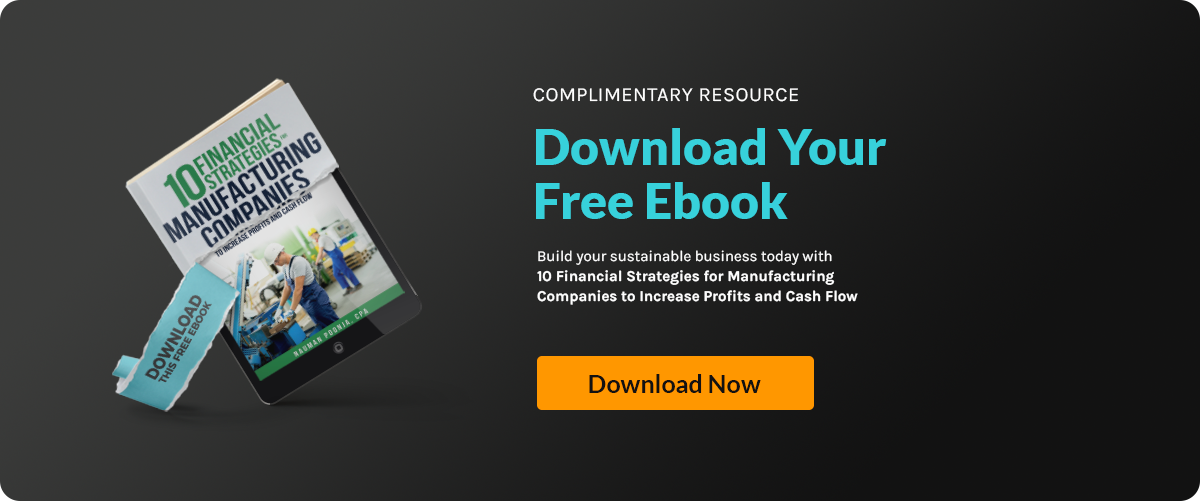For SaaS leaders, growth is everything—but growth without profit discipline is a trap. You can...
Comprehensive Guide to Annual Operating Plans for Business Growth

Every successful business starts each year with a clear vision — but executing on that vision requires more than high-level goals. It demands structure, accountability, and alignment across all functions. That’s where an Annual Operating Plan (AOP) comes in.An AOP bridges the gap between strategy and execution. It converts long-term ambitions into specific, measurable, and financially grounded initiatives that drive day-to-day operations. When done well, an AOP doesn’t just keep teams on track — it becomes a blueprint for growth, resource allocation, and performance management.
This guide breaks down what an Annual Operating Plan is, why it matters, and how to build one that sets your business up for a successful year.
What Is an Annual Operating Plan (AOP)?
An Annual Operating Plan is a detailed financial and operational roadmap that outlines a company's goals, budgets, and key initiatives for the upcoming fiscal year. It includes:
- Revenue and expense projections
- Departmental budgets
- Staffing and hiring plans
- Key performance indicators (KPIs)
- Timelines and execution milestones
Unlike high-level strategic plans that span 3–5 years, an AOP focuses on the next 12 months and provides tactical clarity for teams across the organization.
Why an AOP Matters More Than You Think
Too many businesses operate without a structured operating plan, relying on gut instinct or vague annual targets. This reactive approach often leads to:
- Misaligned departments
- Poor resource allocation
- Inaccurate cash flow forecasting
- Missed revenue and profitability goals
A well-crafted AOP addresses these risks by:
- Linking strategic goals to execution plans
- Allocating resources intentionally, based on financial targets
- Clarifying accountability for departmental leaders
- Supporting proactive cash management and budget forecasting
It also becomes a baseline for ongoing financial performance monitoring, helping teams identify when and where to pivot.
Key Components of an Effective AOP
Building a useful AOP goes beyond spreadsheets and timelines. It requires an integrated view of your business — financial, operational, and strategic. Here are the key elements every AOP should include:
🔹 1. Revenue Targets and Drivers
Setting the right revenue targets is at the heart of the AOP. But effective planning requires more than setting a top-line number — it requires breaking down how that revenue will be generated.
What to include:
- Revenue by line of business – Product, service, subscription, or geography
- Customer segments – SMBs vs. enterprise, new vs. returning customers
- Sales channels – Direct sales, partner sales, online, in-person
- Growth levers – Volume increases, pricing changes, upsells, or new offerings
Why it matters:
This granular view allows teams to build forecasts based on actual sales plans, not assumptions. It also helps marketing and sales leaders align their budgets and campaigns with specific revenue goals.
Pro tip:
Use historical performance as a baseline but factor in external influences such as market conditions, seasonality, and capacity constraints to keep projections grounded.
🔹 2. Expense and Budget Planning
Operating expenses can either support growth — or eat into it. A detailed and realistic expense plan is essential for protecting margins and ensuring resource efficiency.
What to include:
- Cost of goods sold (COGS)– For product-based businesses, forecast material, shipping, and production costs
- Operating expenses – Payroll, marketing, rent, software, travel, professional services
- Capital expenditures – Major equipment, software licenses, office upgrades
- Contingency buffers – For unplanned costs or market shifts
Why it matters:
Without a thoughtful expense plan, overspending can occur early in the year, leaving teams scrambling in Q3 or Q4. A strong budget enables teams to allocate resources strategically, manage cash flow, and remain financially agile.
Pro tip:
Integrate departmental budgets into the AOP with owner sign-offs. This creates accountability and visibility at the team level.
🔹 3. Strategic Initiatives
These are the big-ticket projects or business changes that can materially affect performance. Including them in the AOP ensures they are budgeted, staffed, and tracked like any other core function.
Examples:
- Launching a new product or service line
- Expanding into a new market or region
- Upgrading internal systems (e.g., ERP, CRM)
- Shifting pricing models (e.g., from one-time to subscription)
- Operational efficiency projects like outsourcing or automation
Why it matters:
Strategic initiatives consume time, capital, and talent. When not factored into the AOP, they risk being deprioritized or underfunded. By including them with specific timelines, KPIs, and ownership, you ensure they stay aligned with your annual goals.
Pro tip:
Use a milestone-based approach to track progress on initiatives quarterly. Tie initiatives to measurable outcomes (e.g., % revenue contribution or cost savings) wherever possible.
🔹 4. Headcount and Talent Planning
Your people strategy should match your operational strategy. Headcount planning ensures that every growth target or initiative has the human resources it needs to succeed — without overextending payroll.
What to include:
- Planned hires – By department, role, and quarter
- Attrition assumptions – Natural churn, retirements, or planned exits
- Upskilling and training – Budget and time for internal development
- Organizational changes – Promotions, restructuring, or new departments
Why it matters:
People are often the largest cost — and the biggest asset. Under-resourcing leads to burnout and delays; overstaffing drains cash and inflates operating leverage. AOP-based headcount planning ensures a right-sized, strategically aligned workforce.
Pro tip:
Coordinate hiring plans with revenue milestones — especially in sales, customer success, and delivery teams — to optimize ROI on new roles.
5. KPIs and Performance Metrics
What gets measured gets managed. Your AOP should define not just what you plan to do, but how you’ll measure success at each level of the business.
What to include:
- Financial KPIs– Revenue, gross margin, EBITDA, operating margin
- Sales and marketing metrics – Customer acquisition cost (CAC), conversion rate, pipeline coverage
- Customer metrics – Retention rate, churn, NPS, average revenue per user (ARPU)
- Operational KPIs – Utilization, production throughput, error rates
- Project-based metrics – Completion rate, milestone adherence, ROI
Why it matters:
KPIs keep the AOP from being a static plan. They provide ongoing feedback loops that guide performance reviews, resource reallocation, and executive decision-making.
Pro tip:
Choose a few core KPIs per department that link back to broader company objectives. Review monthly and adjust plans if metrics signal underperformance or market shifts.
How to Build an AOP: A Step-by-Step Approach
Creating an Annual Operating Plan is both a strategic and collaborative process. Here’s a proven step-by-step framework:
✅ 1. Review Current Performance and Strategic Goals
Why it matters:
Before looking forward, it’s essential to understand where the business stands today. This involves analyzing both financial performance and strategic progress over the past year.
What to do:
- Review the previous year’s actuals vs. budget — identify over- and underperformance.
- Assess gross margin trends, customer acquisition costs, operating expenses, and profitability.
- Evaluate strategic initiatives: Which were completed? Which failed or fell short?
- Revisit long-term strategic goals. Are they still relevant in today’s market?
Best practices:
- Host a “lessons learned” meeting with senior leaders.
- Incorporate insights from customer feedback, sales performance, and competitor moves.
- Use rolling trends and 3-year lookbacks to identify persistent gaps.
This step ensures your AOP is grounded in reality — not wishful thinking.
✅ 2. Engage Key Stakeholders Early
Why it matters:
An AOP isn’t a finance-only exercise. It must reflect cross-functional priorities and operational capacity. Engaging the right stakeholders early leads to better assumptions, higher accuracy, and greater buy-in.
Who to involve:
- Finance and accounting
- Sales and marketing leaders
- Operations and customer success
- HR or people ops
- Product or technology leaders
What to do:
- Hold departmental planning sessions to understand each team’s goals and constraints.
- Ask each department to propose key initiatives, hiring plans, and budget needs.
- Align leadership on top business priorities to avoid misalignment later.
Best practices:
- Use a central planning document or shared workspace to gather inputs.
- Establish a clear planning calendar to keep the process on track.
- Encourage open dialogue about risks, dependencies, and stretch goals.
The goal here is to build the plan with the people who will execute it.
✅ 3. Define Objectives and Priorities
Why it matters:
Every business has limited resources. Clear prioritization ensures time, capital, and talent are focused on what will move the needle most.
What to do:
- Identify 3–5 primary business objectives for the year (e.g., expand into a new market, improve margins, grow MRR).
- Break these into department-level goals (e.g., sales target, new product launch, headcount expansion).
- Define the outcomes you expect from each objective.
Best practices:
- Use SMART goals: Specific, Measurable, Achievable, Relevant, and Time-bound.
- Link each objective to a business case or ROI justification.
- Tie goals back to broader strategy (e.g., multi-year roadmap or mission-critical initiatives).
Having a clear sense of priority ensures the operating plan doesn’t become an unfocused wish list.
✅ 4. Build the Financial Model
Why it matters:
The AOP needs to be financially sound. A well-built financial model transforms operational plans into measurable forecasts — and provides the foundation for budget discipline throughout the year.
What to include:
- Revenue forecasts – by product, channel, region, or customer type
- Cost of goods sold (COGS) – tied to production, delivery, or servicing
- Operating expenses – departmental budgets, marketing spend, rent, software
- Headcount projections – hiring timelines, salary assumptions, benefits
- Capital expenditures – major purchases, investments, or system upgrades
- Cash flow projections– to assess liquidity, funding needs, and runway
Best practices:
- Use a driver-based model — where revenue and expense assumptions are linked to inputs like sales volume, conversion rate, or headcount.
- Build in multiple scenarios: base case, upside, and downside.
- Forecast on a monthly basis, not just annually, to support rolling tracking.
This is where your P&L, balance sheet, and cash flow forecasts all come together.
✅ 5. Assign Ownership and Accountability
Why it matters:
A plan is only as effective as the people driving it. Assigning clear ownership to each component of the AOP ensures execution doesn't get lost in ambiguity.
What to do:
- Identify owners for revenue targets, strategic initiatives, department budgets, and KPIs.
- Set quarterly milestones and checkpoints for progress reviews.
- Clarify decision-making authority, reporting expectations, and escalation paths.
Best practices:
- Use project management software or dashboards to assign, track, and update progress.
- Align ownership with performance incentives when possible.
- Encourage leaders to cascade ownership to their teams — accountability should flow through the organization.
Assigning owners transforms the AOP from a planning document into an execution framework.
✅ 6. Finalize, Communicate, and Track
Why it matters:
Even the best operating plan will fail if it sits in a shared drive collecting dust. Finalizing the AOP and rolling it out organization-wide is what turns strategy into action.
What to do:
- Finalize the full AOP and supporting budgets, then present to leadership for approval.
- Create tailored summaries for different audiences: leadership team, board, department heads, broader staff.
- Launch a company-wide communication plan that clearly outlines goals, key initiatives, and success metrics.
- Set a cadence for regular AOP reviews (monthly, quarterly).
Best practices:
- Use dashboards and reporting tools to visualize progress.
- Build the AOP into your monthly financial reporting rhythm.
- Create a feedback loop to refine assumptions and adapt quickly if business conditions change.
The AOP should be dynamic, visible, and central to how the business operates throughout the year — not just during planning season.
Best Practices to Keep Your AOP Relevant
Even the best AOP can become obsolete if it’s not revisited. Here are a few best practices to ensure ongoing relevance:
- Schedule quarterly reviews to adjust forecasts and priorities
- Integrate your P&L structure with AOP categories to improve reporting accuracy
- Use rolling forecasts to adapt quickly to market changes
- Ensure leadership alignment through regular updates and performance reviews
Pairing your AOP with real-time financial dashboards helps leadership teams stay agile without losing sight of long-term goals.
AOP Self-Assessment Checklist
Ask yourself:
- Do we have a documented, measurable operating plan for the year?
- Are our financial projections tied to specific initiatives and KPIs?
- Are departmental budgets aligned with strategic priorities?
- Is ownership and accountability clearly defined?
- Are we reviewing performance against the plan on a regular basis?
If you answered “no” to any of the above, your AOP may be a missed opportunity — or worse, a hidden liability.
Conclusion: Transform Planning Into Performance
A strong Annual Operating Plan is more than a planning document — it’s a foundation for execution, accountability, and growth. Businesses that invest time in building and maintaining a well-structured AOP consistently outperform those that rely on intuition or last-minute planning.
If your current planning process feels reactive, disjointed, or financially disconnected, it may be time to rethink how you approach the year ahead.
Strategic planning doesn’t stop once the year begins. With the right AOP in place — and the discipline to review and adapt it — your business can stay aligned, empowered, and performance-driven no matter what the market brings.







